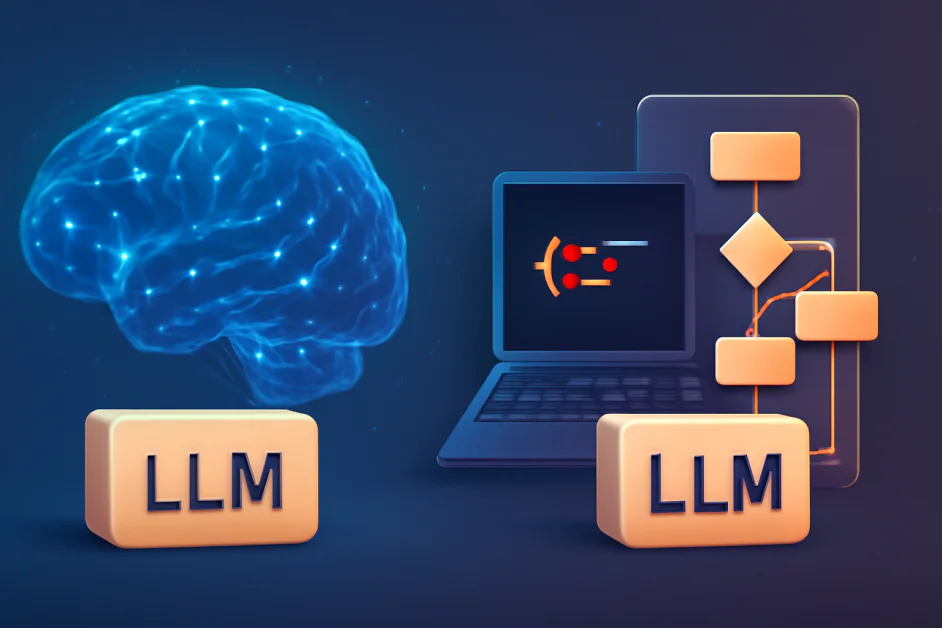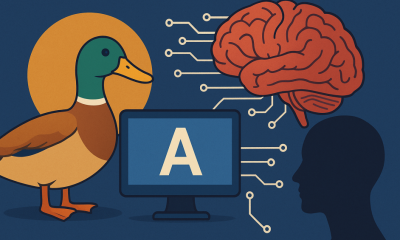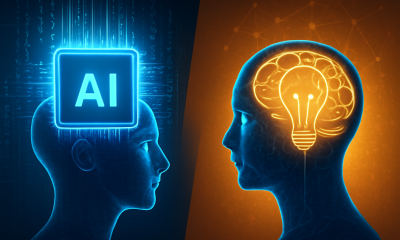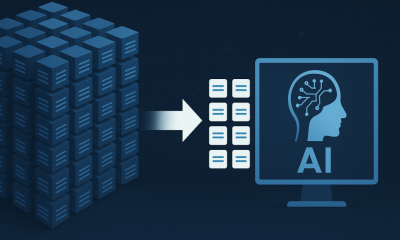Artificial Intelligence
The Neurosymbolic Shift: Why Pure LLMs Are Hitting a Wall

The AI industry is experiencing a significant shift that is not yet widely recognized. While large language models (LLMs) continue to dominate the field, a new approach is emerging quietly. This approach, referred to here as Neurosymbolic LLMs, enables neural network based LLMs to employ symbolic reasoning for performing the task. Unlike pure LLMs, which rely solely on neural networks’ pattern recognition abilities, Neurosymbolic LLMs first convert natural language instructions into symbolic programs and then use external symbolic interpreters, such as programming language interpreters, to execute them. This integration enhances the model’s ability to handle complex tasks, offering better accuracy, transparency, and interpretability. In this article, we will explore the reasons behind the growing shift toward Neurosymbolic LLMs.
The Scaling Myth Falls Apart
The key promise of the pure LLM era was simple: bigger models would produce better results. The idea was that with more data and computing power, AI could produce better results. This theory worked for a time, but recent developments have shown its limits. A recent example is Grok 4, which used 100 times the computing power of its predecessor but did not show significant improvements on challenging benchmarks like Humanity’s Last Exam. While Grok 4 performed better in some areas, the gains were far smaller than expected. However, when symbolic tools were integrated into these models, performance improved dramatically. This suggests that scaling alone is not the key to improving AI’s performance and neurosymbolic approach has the potential to outperform pure LLMs.
The Limitations of Pure Neural Networks
Pure LLMs have inherent weaknesses that scaling cannot overcome. These limitations stem from the way LLMs are constructed using neural networks, which primarily rely on pattern recognition. While effective in many contexts, their reliance on pattern recognition and absence of reasoning capabilities restricts their ability to perform complex tasks that require deeper understanding or logical inference. For example, when Apple researchers added irrelevant clauses to mathematical problems, state-of-the-art LLMs saw accuracy drops of up to 65%. In the GSM-Symbolic study, LLMs performed poorly when numbers were shuffled or extra clauses were added, even with perfect visual inputs.
Another example of this flaw is seen in crossword construction. ChatGPT, which cannot understand code, struggles with tasks like grid construction. This led it to make simple mistakes such as recognizing “RCRCT” as a valid word. By contrast, OpenAI’s o3, which uses symbolic code, can create crossword grids correctly. This shows that pure LLMs cannot reliably execute algorithmic processes, distinguish correlation from causation, or maintain logical consistency in multi-step reasoning tasks.
The Rise of Symbolic AI: Logical Precision Over Pattern Matching
Symbolic AI uses a transparent, rule-based system that is easier to understand and verify. Unlike neural networks, which are often opaque, symbolic systems provide clear reasoning paths from input to conclusion. This makes symbolic AI ideal for applications that require transparency and accountability.
Symbolic systems are also more efficient. For example, the Neuro-Symbolic Concept Learner achieves high accuracy using just 10% of the data required by traditional neural networks. More importantly, symbolic systems can provide human-readable explanations for each decision, which is crucial for fields like healthcare, finance, and law.
Recent studies show the effectiveness of symbolic approaches in tasks like the Tower of Hanoi problem, where models like o3 performed better when symbolic code was used. Similarly, the Abductive Rule Learner with Context-awareness (ARLC) demonstrated near-perfect accuracy in arithmetic problems, while pure LLMs struggled to reach even 10% accuracy as the issues grew more complex.
The Growing Demand for Explainable AI
As regulations on AI systems increase, the demand for explainable and transparent AI will grow. Sectors like healthcare, finance, and law require AI systems that can explain their reasoning. Neurosymbolic AI is particularly well-suited to meet these needs. The European Union’s AI Act and similar regulations are pushing companies to adopt AI systems that demonstrate accountability and transparency.
Moreover, investment trends are shifting towards AI systems that can balance performance with explainability. Companies that value both innovation and trust are finding neurosymbolic systems, with their superior ability to explain decisions, increasingly attractive.
Improving AI Reliability with Neurosymbolic Integration
While pure LLMs have advanced significantly, their reliability remains a concern, particularly in high-stakes fields like healthcare, law, and finance. This unreliability stems from LLMs’ reliance on patterns and probabilities, which can lead to unpredictable outputs and errors. Neurosymbolic LLMs, which combines neural networks with symbolic reasoning, offers a solution. By using logic to verify and organize information, LLMs can ensure that the generated responses are both accurate and reliable. It can reduce errors, enhance transparency, and maintain consistency in outputs. This approach could be especially valuable in critical sectors, improving trust in AI systems. An example of this approach, GraphRAG model, shows how combining these technologies can enhance both creativity and accuracy.
Neurosymbolic LLMs in Action
Neurosymbolic LLMs have shown remarkable performance in tackling complex challenges. Google DeepMind’s systems, such as AlphaFold, AlphaProof, and AlphaGeometry, combine LLMs with symbolic reasoning to achieve outstanding results in protein folding, mathematical theorem proving, and geometric problem-solving. They use symbolic reasoning techniques such as search and conditional iteration, which traditional neural networks had abandoned. Furthermore, modern models are increasingly using symbolic rules for data augmentation, showing that symbolic reasoning is becoming a key part of leading AI systems.
Challenges and Opportunities
While neurosymbolic LLMs has made significant progress, there is still a lot of work to be done. Current implementations, such as adding code interpreters to LLMs, offer functional capabilities, but they are still not a complete solution to fulfill the requirements of artificial general intelligence (AGI). The real challenge is to develop systems where neural and symbolic components work seamlessly together by allowing machines to reason and understand the world like humans. One of the future goals of neurosymbolic LLMs is to enable them to dynamically integrate with different reasoning modes without losing consistency. This will empower them to reason differently in different situations. However, it requires new architecture that can use symbolic reasoning alongside neural networks.
The Bottom Line
The rise of neurosymbolic AI is a paradigm shift in the development of artificial intelligence. While traditional LLMs have proven effective in many areas, they are limited by their reliance on pattern recognition and lack of reasoning capabilities. The emerging neurosymbolic approach, which combines LLMs with symbolic reasoning, offers significant advantages in terms of accuracy, transparency, and interpretability. Neurosymbolic systems excel in tasks requiring complex reasoning, logical precision, and explainability. These qualities are increasingly important in regulated industries like healthcare, finance, and law. With growing demand for AI transparency and accountability, neurosymbolic AI is becoming a critical solution for developing more reliable and understandable systems. However, challenges remain in fully integrating neural and symbolic components, and continued innovation will be needed to create systems capable of dynamic reasoning across multiple modes.












